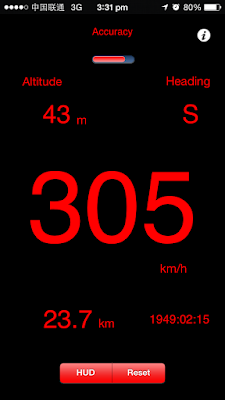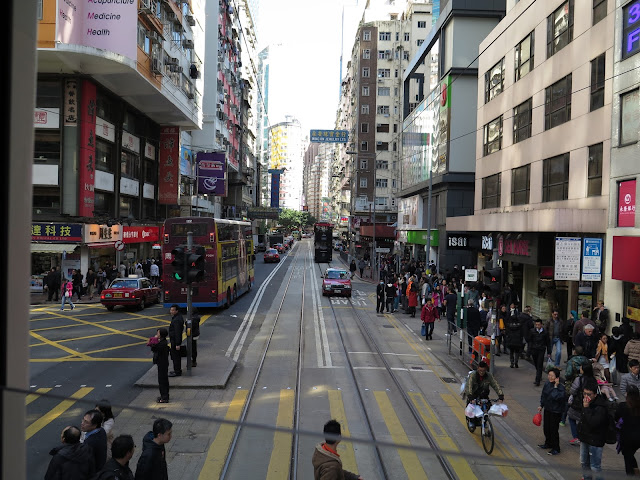In summary, "not what I expected" and characterised by being "on time" especially the subway and high speed trains. Also very clean and totally devoid of graffiti.
This is the Chinese high speed train they run on a mainly elevated, purpose built, network right across China with continued expansion.
We took them twice - Guangzhou to Beijing 2500km, 8 hours two short stops and then Beijing to Xian.
For me it was one of the personal highlights of my visit and illustrates what can be done with the right will power and the absence of the resource management act !!- such a network would be beyond transformational for NZ
Pretty much low level flying - see the speed below from my GPS (below)
This is first class - not so expensive for westerners and really comfortable seats that are so high you can't see the other passengers
In the last two decades China has moved from a people powered nation to one thats petrol powered.
As a result their big cities are incredibly motorised and congested. Motorways everywhere - which all seem tolled - and those costs can add up fast . There seemed to be a lot cameras of mounted on overhead gantries for what nefarious purpose wasn't obvious .
The fleet which features more luxury cars than I ever saw in North America is incredibly new. The average age of the fleet would have to be five to ten years newer than NZ although I could not say the same for the truck fleet.
Almost all two wheeled vehicles are electric, which came as a huge surprise. The rest of the two wheeled motorised fleet are scooters and small motorbikes - I never saw one over 125cc.
I noticed what road rules I could work out seemed to vary geographically with the North American "right turn on red" in operation in some places.
On mainland China they drive on the right, Macau and Hong Kong on the left.
The standard of driving seems very region centric with it varying from terrifying to not quite so terrifying. I did not drive there my level of trust in other motorist actions is too high to survive five minutes. Having said that I fully realise our driving is second rate compared to a lot of places.
On mainland China they drive on the right, Macau and Hong Kong on the left.
The standard of driving seems very region centric with it varying from terrifying to not quite so terrifying. I did not drive there my level of trust in other motorist actions is too high to survive five minutes. Having said that I fully realise our driving is second rate compared to a lot of places.
For the most part Public transport is good and cheap as are taxis - although many taxis refuse to take you a short distance which is off putting at night.
Generally pedestrians in the bigger cities are very well looked after with many over-bridges and unlike in NZ where the steps and ramps completely put people off using them many in China can be accessed using escalators - as can be seen below (Shanghai)
China has a massive reliance on water transport and of course is home to the Grand Canal a UNESCO World Heritage site with the oldest parts dating to the 5th century BC and the newest around 600AD. Total length 1776 km some southern sections still in heavy use .
From my hotel window I counted 32 passenger ferries in operation on the Hong Kong harbour along with an uncountable number of fright vessels.
There is a decent if clunky tram network surviving in Hong Kong from the days of British imperialism but this hides the very fast and modern subway system including one track that runs at 130km/hr between the city and the airport.
There are downsides of course, congestion, pollution and queuing for a taxi as in the one hour wait at the main rail station in Beijing which kind of undermines the pace the high speed rail network!










No comments:
Post a Comment